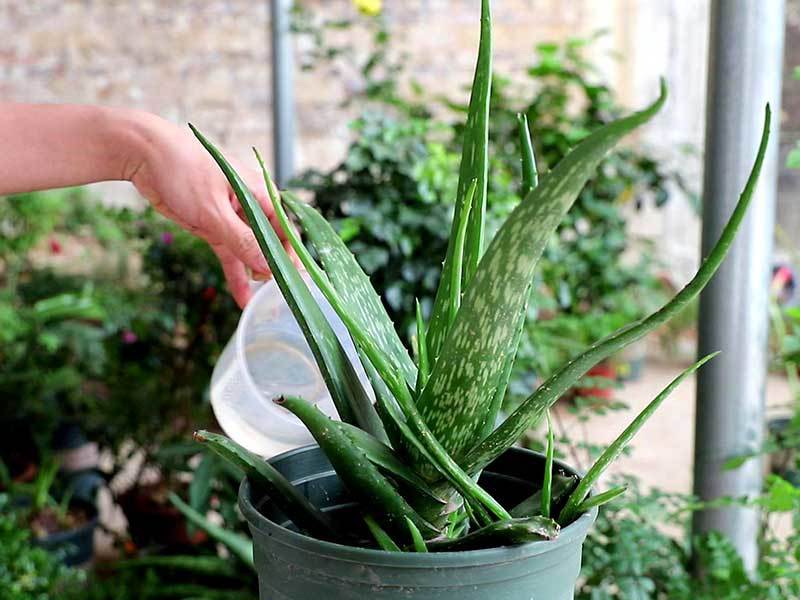Aloe Turning Purple: Causes and Remedies
Introduction
Aloe vera turning purple may be stress, sunlight, or even just its natural lifecycle. You need to know the reasons and how to ensure it thrives.
Why Is My Aloe Plant Turning Purple?
Aloe vera has a typical jade hue. This is sourced from a cocktail of chlorophyll and carotenoids. They are essential for photosynthesis. But when the plant dons a purple tinge, we can blame a different pigment entirely: anthocyanin.
Normally associated with fall foliage in temperate climates, anthocyanin offers plants a protective role. It shielding them from excessive sunlight, cold, and even potential predators.
In the case of aloe, a combination of environmental stresses can provoke heightened anthocyanin production. For example, environmental stress, sunlight exposure, and temperature fluctuations. The leaves exhibiting gradients from faint lavender to deep purple, particularly at the leaf margins.
Environmental Stressors
Extreme Temperatures
Extreme temperatures can lead to a aloe plant turning purple. Prolonged exposure to heat or cold can disrupt normal cell functions and the balance of nutrients. Protecting aloe from drafts and providing insulation against the cold. Keeping it out of direct midday sun to avoid heat damage.
Inadequate Sunlight
While aloe can often endure suboptimal lighting conditions, consistently insufficient sunlight can prompt the plant to start turning purple. The reduced sunlight limits the production of chlorophyll. So anthocyanin might step in to fill the void.
If you've noticed aloe vera plant turning purple, consider moving your aloe to a sunnier spot. But do it gradually to avoid sunburn.
Overwatering
In the wild, the natural habitats of aloe experience infrequent, heavy rains. Consistently damp soil can lead to root rot. This starves the plant of nutrients and oxygen.
The disruption in the balance of water and nutrients can trigger anthocyanin production. You should adjust your watering schedule. Only water when the soil is fully dry. This can often help a purple aloe return to green.

Nutritional Deficiencies
Common Nutritional Deficiencies
Magnesium is essential for green pigment and the process of photosynthesis. Chlorophyll production decreases when magnesium levels are insufficient. This causes the green color to fade. The purple will hues to dominate. Signs of magnesium deficiency include yellowing of leaves and slower growth.
Phosphorus plays a pivotal role in aloe's energy transfer and root development. Plants starved of phosphorus may exhibit purpling due to a reduction in the synthesis of various pigments. Watch for stunted growth and a delay in flowering. This is indicative of phosphorus deficiency.
Identifying Nutrient Deficiencies
A uniform purple cast across the leaves or as splotches and streaks. Additionally, a check for stunted growth and an odd leaf texture can further corroborate the presence of a deficiency.
Adjusting Fertilizer Application
Select a fertilizer with a balanced N-P-K ratio designed for succulents. Begin by applying it at half strength and monitor the aloe's response. Gradually increase the concentration over time as the plant stabilizes.
Soil Amendments
Introduce organic matter to the aloe's soil to enrich it. For example, compost. This will enhance the soil structure and bolster the aloe's access to vital elements.
Common Pests and Diseases
Common Pests
Spider Mites are tiny arachnids which spin fine webbing across the leaves of your aloe. They suck the juices from the plants. This feeding can severely disable the plant to produce chlorophyll. The results may lead to a purplish hue.
Mealybugs are small and soft-bodied insects. They excrete a sugary substance. This can lead to the growth of sooty mold. These mold disrupts the plant's light absorption. This can lead to issues with the chlorophyll balance.
Fungal Infections
Fungal infections can cause leaves to discolor. For example, root rot from overwatering. You plants are often with a speckled or spotted pattern. The plant's response to fight the infection can again lead to aloe vera turning purple.
Prevention and Treatment
You should periodically inspect your aloe plant to prevent these infestations and diseases. Keep a consistent watering and light schedule. Place a humidifier nearby in dry climates if necessary.
You can use natural remedies for pest prevention. For example, neem oil or insecticidal soaps. You may need to repot aloe if you identify a fungal issue. Use fresh, well-draining soil after trimming the affected roots.
Conclusion
By understanding the various reasons behind aloe turning purple, you can better address the root cause of the issue. With this guidance, you'll be well on your way to fostering a healthy aloe vera plant once more.
Leaf color changes can have many causes. For more common issues and solutions, visit our why plant leaves change color hub.
Related Article:
Haworthia Turning Purple

